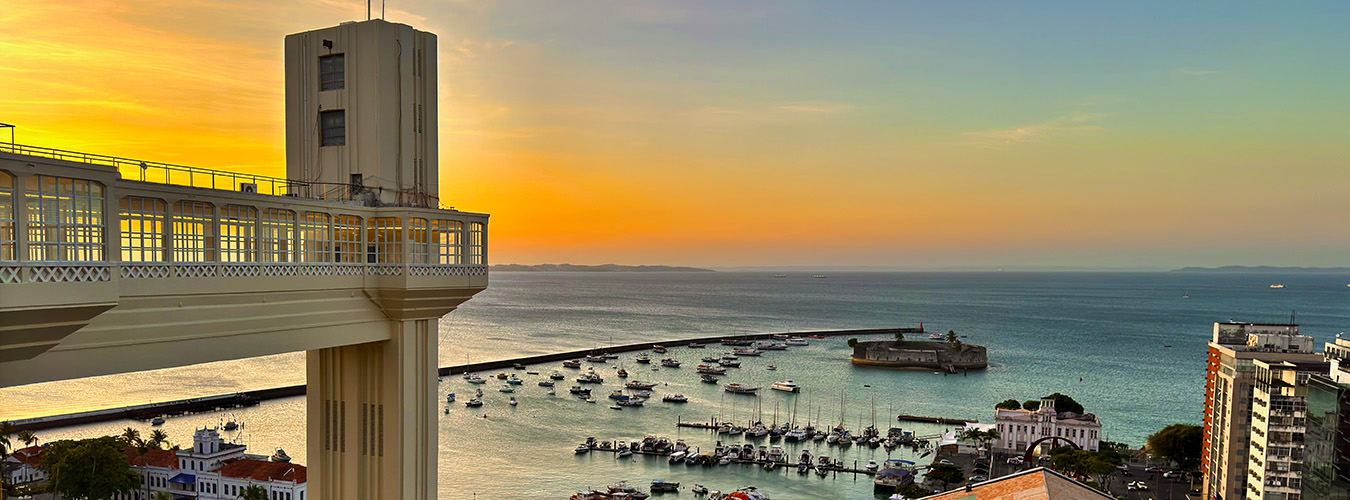Modern Elevator and Escalator Innovation within Historic Buildings | Otis

Modern Elevator and Escalator Innovation within Historic Buildings
Otis teams are helping modernize and service culturally significant, historic buildings around the world with expertise and care.
Historic buildings are a tangible representation of our past, embodying cultural, architectural and aesthetic heritage - and fostering a sense of pride, identity and community.
At these unique sites, Otis engineers and technicians install, maintain and modernize elevators and escalators; ensuring that they meet contemporary standards for safety, energy efficiency and accessibility, while preserving the buildings' integrity and original design.
"We begin each project with a detailed assessment of the building, working closely with preservationists, architects, and local authorities," explains Erika Goldstein, Vice President of Modernization. "This collaborative approach ensures that all changes respect the original structure and comply with heritage regulations."
Elevators take the stage at the Vienna State Opera, Austria
Two custom-made scenery elevators play a starring role in stage logisitics at the Vienna State Opera, which opened in 1869.
Beyond maintaining the two scenery elevators, one of Otis' most memorable projects was converting the Opera's freight elevator from a cable to a hydraulic system. The massive elevator cab can be loaded directly from the truck and transports props of all kinds to the Opera stage. The smallest elevator in the Opera - just big enough for one person - provides easier access for stage and lighting technicians. To ensure continued safe and reliable rides, the passenger elevators were successively modernized with new state-of-the-art control systems.
In addition to the scenery elevators, Otis also provides service excellence to maintain another 12 elevators.
Photo credit: © Vienna State Opera/Michael Pöhn
Dazzling century-old elevators at La Pedrera, Barcelona, Spain
La Pedrera, in Barcelona, is a century-old UNESCOTM World Heritage Site, now used as a cultural building for exhibitions and educational activities, as well as residential apartments.
Otis maintains the four elevators in this unique building, which welcomes over a million visitors every year.
Accessibility is a top priority for La Pedrera. To ensure that visitors have access to the most popular upper floors, including the roof terrace, our technicians deploy a treasure trove of delicacy and precision to maintain these veritable works of art, absolutely magnificent with their carved hardwood cabins, elaborate stained-glass windows and wrought-iron doors. One challenge is finding replacements parts, which sometimes means working with carpenters and others.
Elevators serve the ambitious modernization of an icon in Paris, France
Originally built in 1900 for the Universal Exhibition, the Grand Palais in Paris is an important cultural and historic site best known for its vast glass-roofed atrium. When the time came to undergo a complex and highly customized transformation of the building to meet current accessibility standards, including going from just 2 to 49 elevators, Otis was chosen.
Our teams provided technical expertise early on during the design phase, including studying the building's traffic patterns to provide the best solutions to move visitors effectively through the venue, enhancing accessibility and traffic flow.
This project required both careful execution to preserve the historic features of the building and robust project management to ensure the partial opening for the global sports competition taking place in Paris in the summer of 2024.
Technically modernized, aesthetically rejuvenated elevators at Elevador Lacerda, Salvador, Brazil
The technology and aesthetics of the four elevators of Salvador's famous Elevador Lacerda national monument, originally built in 1873, have been completely modernized by Otis.
Otis originally installed the elevators in the second towerin 1930 and has maintained the tower's equipment continuously since that time. The modernization, completed in early 2025, includes new automatic doors, LED lighting and the installation of an air conditioning system in all cabins. Upgrades also included new granite floors, a brushed stainless steel subceiling, a voice system for communicating with passengers, and new coverings for the side and back panels. The interiors also have a new look with digital floor position and direction indicators.
